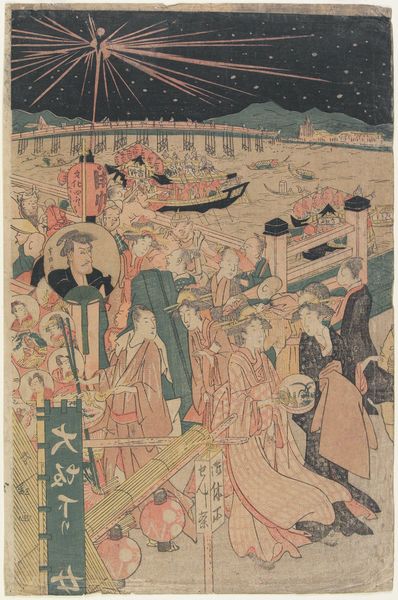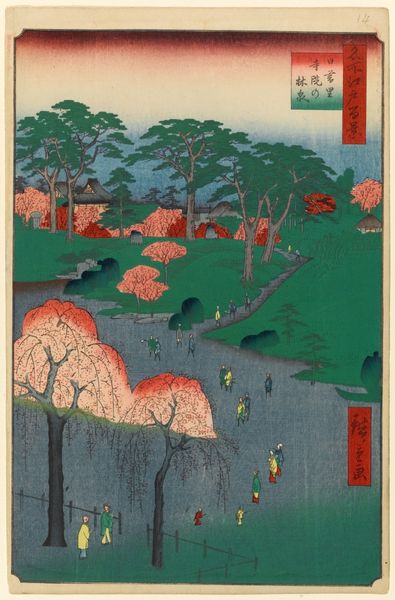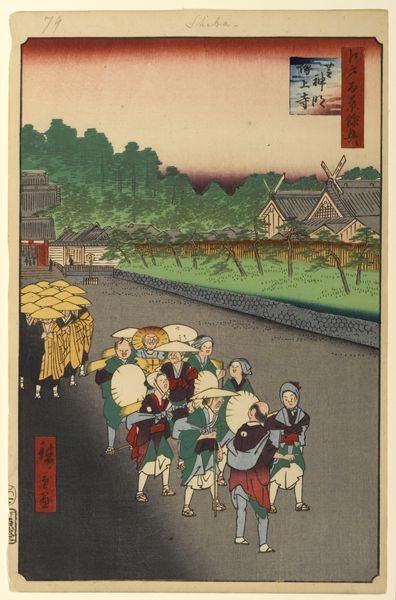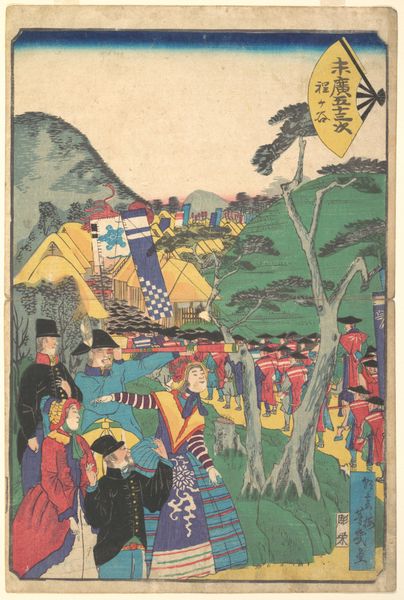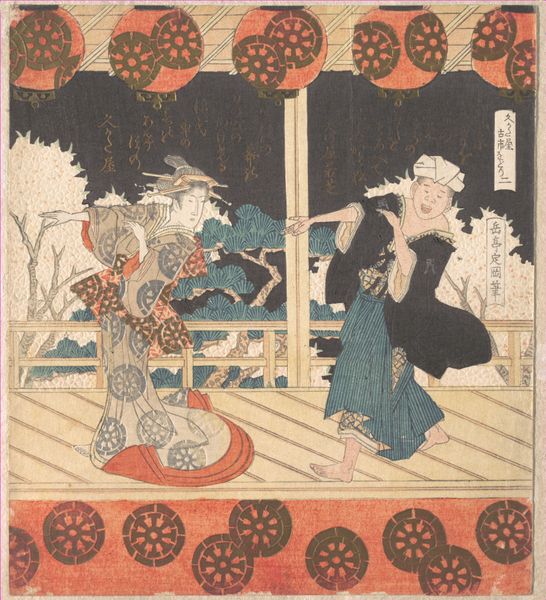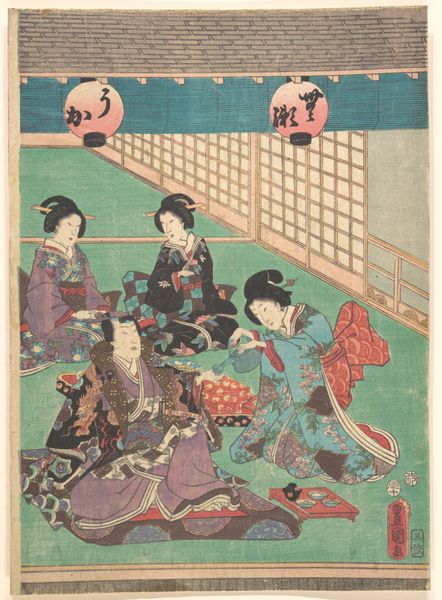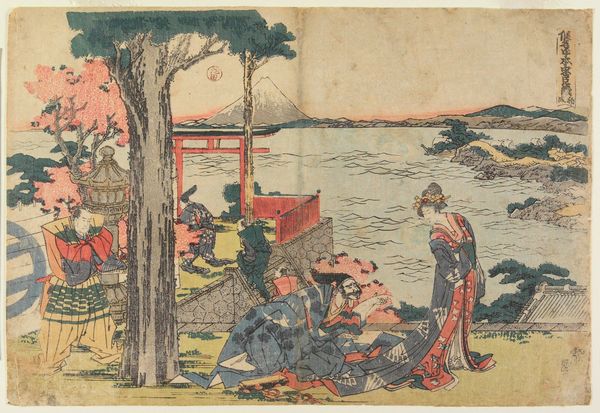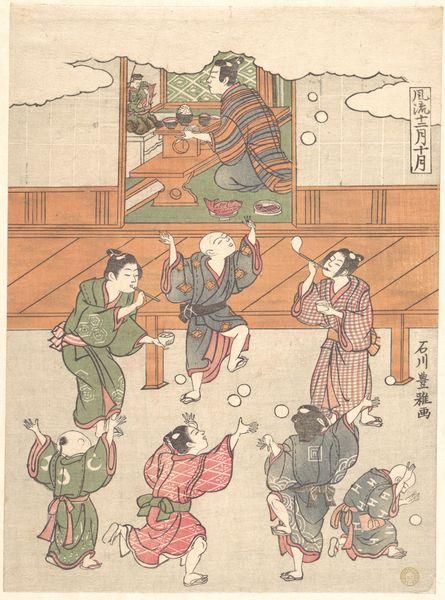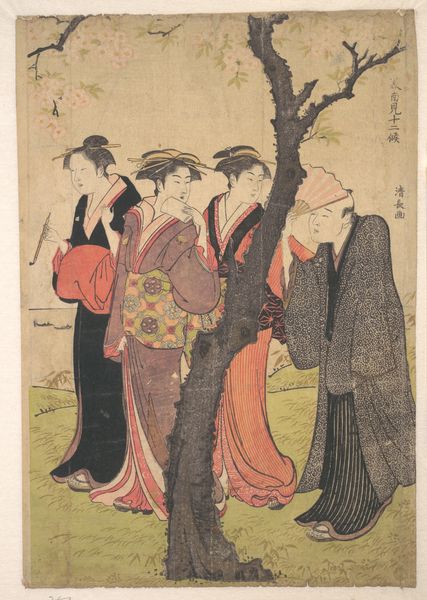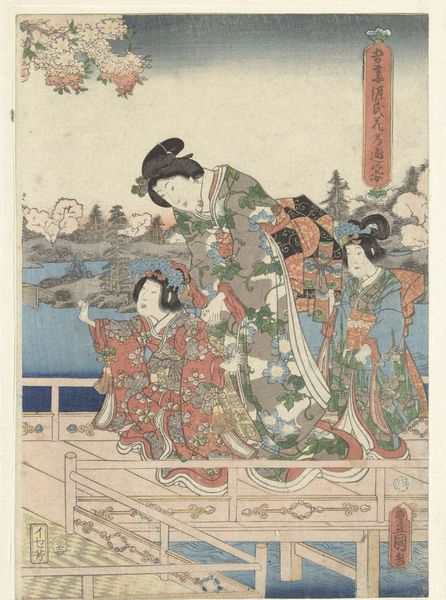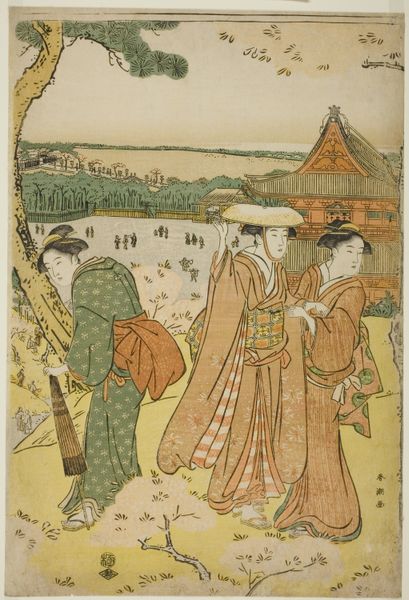
print, paper, ink
# print
#
landscape
#
ukiyo-e
#
japan
#
figuration
#
paper
#
ink
#
genre-painting
#
watercolor
Dimensions: 13 1/8 × 8 3/4 in. (33.3 × 22.2 cm) (image, vertical ōban)19 × 22 7/8 × 1 1/2 in. (48.26 × 58.1 × 3.81 cm) (outer frame)
Copyright: Public Domain
Curator: Ah, yes, “Five,” a woodblock print attributed to Utagawa Hirokage, likely created around 1859. Notice the meticulous detail in each line, characteristic of the ukiyo-e tradition. Editor: It strikes me immediately as quite dynamic, almost chaotic! The figures in the foreground spill forward, contrasting sharply with the serene landscape receding behind them. Curator: Observe the visual interplay. The foreground is anchored by a group of figures depicted with dramatic gestures, while the middle ground hosts a gentler gathering under blossoming trees. Mount Fuji looms distantly, almost ethereally, in the background. Editor: Mount Fuji serves as an anchor, doesn’t it? It’s such a recognizable symbol of permanence amidst the transient joy unfolding in the lower registers. I am curious to understand what's being represented, perhaps the cherry blossom season celebrations that carry a great amount of emotional weight within Japanese culture. Curator: Quite possibly. These are genre paintings, you know, focused on everyday life and landscapes. Editor: The tumbling dice or sweets, and spilled contents, suggest an unraveling decorum or perhaps luck gone awry. Is it commentary on the fleeting nature of enjoyment or wealth? What meaning could that red form symbolize, a sort of logo for the depicted festivity, that draws attention from the whole? Curator: It's quite interesting that it could also represent, with its flat form, an unachieved pictorial synthesis: as though it calls out to be deconstructed as an abstract sign rather than a symbolic reference. We could explore that further from a formalism standpoint. Editor: This work reminds us that visual experience and artistic intention rarely sit still. Meanings change through time, based on the background of the observer. Curator: Indeed. And from a structural perspective, it provides a case study of tension, from line and composition, a fascinating exercise of an accomplished technician.
Comments
No comments
Be the first to comment and join the conversation on the ultimate creative platform.
